As an Amazon Associate I earn from qualifying purchases.
Everyone wants to learn how to make ceviche, and, while ceviche recipes are all over the place, a basic ceviche is, more or less, pico de gallo with fish or seafood in it.
Ceviche is one of those seemingly esoteric dishes that Americans have truly embraced, especially those of us who live fairly near the ocean. A Peruvian invention, the original ceviche recipe is fish or seafood marinated in citrus juices, which then “cook” the fish. I’ve seen all sorts of versions served in restaurants, and if you look on any angler’s forum you’ll see recipes for ceviche of… well anything, really.
This can be a very bad idea.
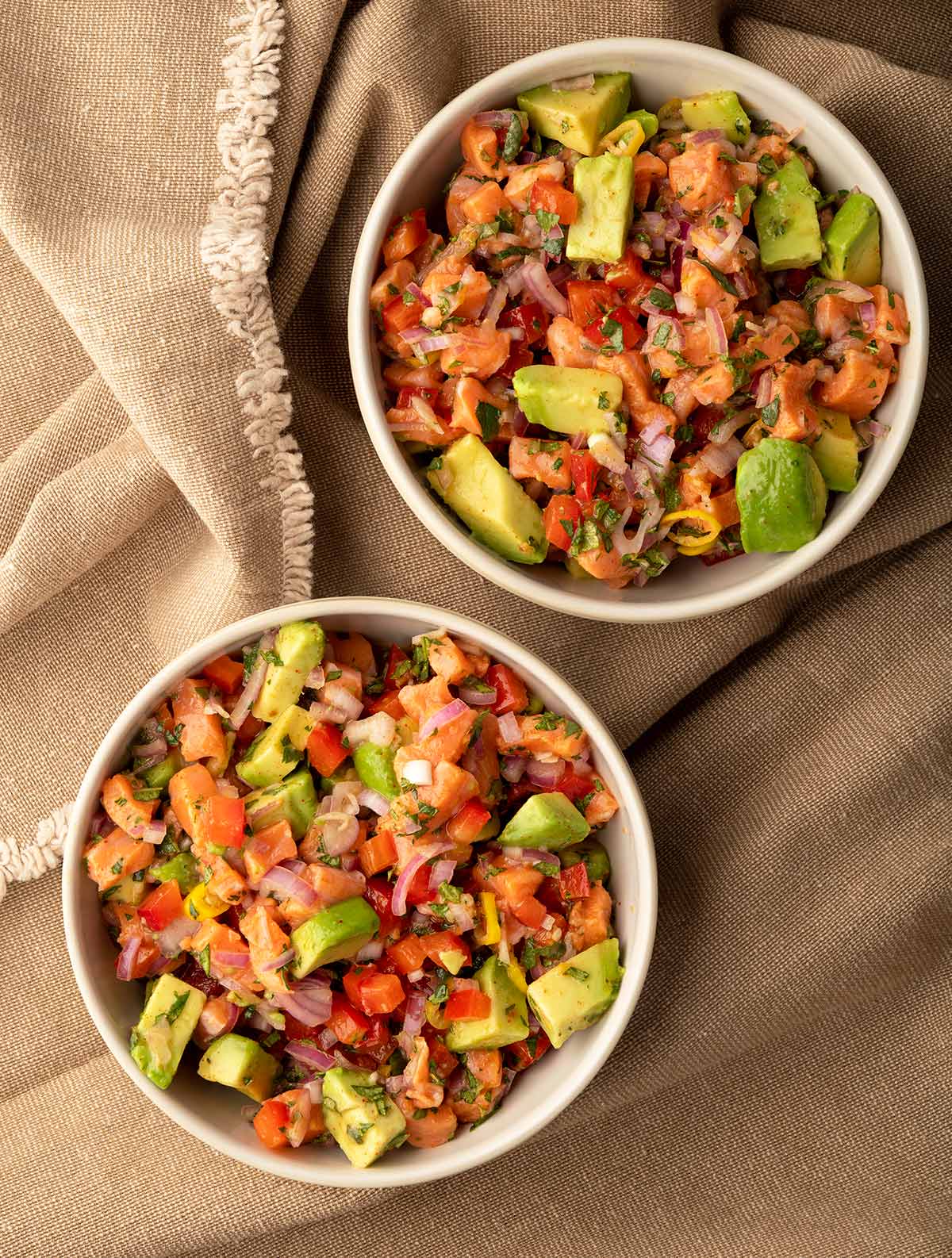
The reason is because ceviche (sev-ee-chay) is still, for the most part, a raw fish dish.
The citrus bath the fish or seafood sits in does turn the meat opaque, giving it the appearance of being cooked, and it does kill some of the many wee beasties present in raw foods that can make you sick, notably the toxin vibrio. But the ceviche-making process will not protect you from the worst of the nasties, ranging from salmonella to parasites and worms.
Certain species of fish tend to be more or less prone to parasites. So the best fish for ceviche are those you would see at a trip to the sushi bar. Tuna and other pelagic species tend to be free of parasites (swordfish being a notable exception), as is farmed salmon (oddly). But ever notice that mackerel (saba) is always cured?
That’s because it can often contain anasakis worm larvae, also known as seal worm. Everything in the cod family is especially prone to infestation, too, which is why you never see cod sushi.
Here in the West, Pacific salmon, rockfish and halibut well known to harbor anasakis larvae, and to be safe you must freeze your fish before eating it raw. And when I mean freezing I mean really freezing. You need the fish to hit -4°F for about a week to do the trick. Note that older home freezers never hit this temperature.
(If you want to learn more on this topic, we did an entire podcast episode on parasites in fish.)
I don’t want to scare you too much. The vast majority of illnesses you might get from eating tainted or parasite-laden raw fish will be moderate to light. It’ll feel like food poisoning, with cramps, nausea and a serious case of the trots. Not fun, but not life-threatening, either. This is because in most cases we are not what’s called a “definitive” host, meaning the parasite hits a dead end with us.
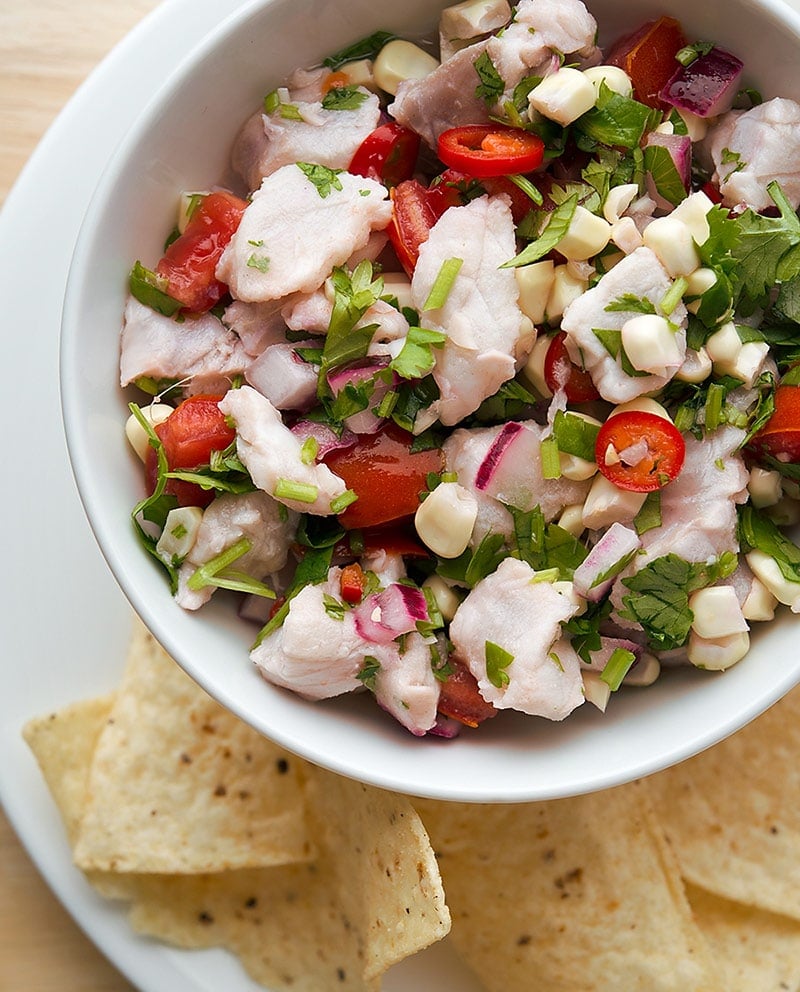
Seal worm is a great example. The seal worm (anasakis) is around wherever there are seals and sea lions — they are the “definitive” host for that parasite. When we eat raw, tainted salmon, the worm says, “Cool! A mammal! Let’s attach to his intestines.” But the worm soon learns that a person is not a sea lion and it dies, but not before making you sick.
We are a definitive host to lovely critters like liver flukes and tapeworm, however, which are common in North American freshwater fish. The single largest vector for tapeworm in America is from people eating raw or undercooked trout. People think, “Hey! I love salmon sushi, and trout is just a cousin of a salmon, so…”
Bad idea. Under no circumstances should you eat freshwater fish raw or in ceviche that has not been properly frozen first. Remember the only way to get rid of a tapeworm, which can grow longer than 20 feet in your guts (nasty!) — is to take medicine that will kill it. You then need to eject the thing. Ew.
Now that I’ve freaked you all out, here’s some good news: Actual illness from parasites and such is pretty rare. I’ve known guys who’ve eaten fresh raw salmon for years without getting sick, and raw Pacific salmon is one of the fish with the highest incidence of tapeworm and seal worm infestation.
What’s more, you can vastly improve your chances of avoiding parasites in your fish by killing the fish quickly when it comes overboard, bleeding it, and gutting it ASAP. This last bit is the most important because virtually all the parasites hang out in the viscera of fish, not the meat. In most cases, the meat gets tainted because when the fish dies the parasites panic and burrow into the meat.
Here is an overview of seafood safety from the Centers for Disease Control and Prevention.
Bottom Line: Unless you are tuna fishing, make your ceviche from pre-frozen fish. It’s just a smart thing to do.
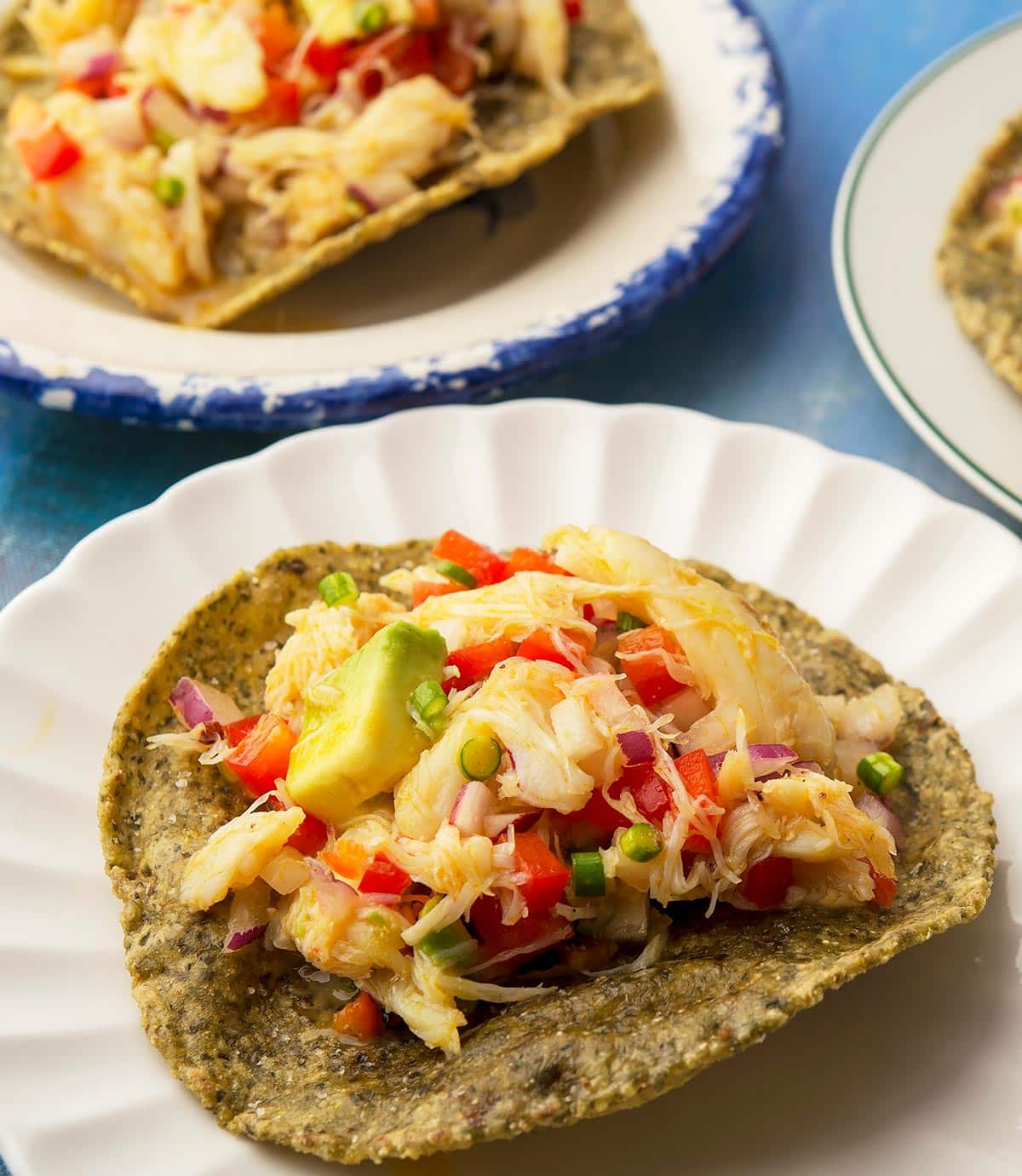
Once it’s been properly frozen, however, the sky’s the limit. A traditional Peruvian ceviche recipe typically has onions, chiles, cilantro and sometimes corn and tomatoes. I normally go that route and serve an appetizer-style ceviche that’s great eaten on tortilla chips. Fantastic for a light dinner, or to put out when you are watching football or having a party.
I have variations on how to make ceviche that range all over the Latin American world, from a Chilean salmon ceviche, to Mexican crab ceviche tostadas, and even a ceviche de calamar, with squid.
Marinating times make a difference when you are making ceviche. Depending on the size of the fish pieces, you will need at least 30 minutes and normally an hour for the citrus to “cook” the fish. Two hours is fine, but beyond that the ceviche, while still good, becomes more of a pickled fish thing. It’s a subtle difference, but you can taste it.
If you don’t marinate the fish at all, and serve basically a mash-up of sushi and ceviche, you have Mexican aguachile.
Citrus matters, too. You always want the dominant citrus in the marinade to be either limes or lemons, which are far more acidic than oranges, grapefruits or tangerines. Add these fruits as an accent to the ceviche; I am especially fond of a little grapefruit in the mix.
Basic Ceviche
Ingredients
- 1 pound pre-frozen lingcod, rockfish or other lean, white fish
- 3 limes
- 2 lemons
- 1 grapefruit
- Salt and black pepper
- 1/2 red onion, sliced root to tip
- 2 Roma or other paste tomatoes, seeded
- 1 ear of corn, kernels sliced off
- 1 habanero or rocoto chile pepper, or more to taste
- 3 tablespoons chopped cilantro
Instructions
- Slice the fish into small, bite-sized pieces. Cut the tomatoes into pieces the same size as the fish and set them aside for later. Zest 1 lime, 1 lemon and the grapefruit and grate them fine; I use a microplane grater to do this. Mince the habanero fine. Juice all the citrus. Add all the ingredients except for the tomatoes and the cilantro to a bowl or plastic container with a lid and refrigerate for 30 minutes to 2 hours.
- Add the tomatoes and cilantro, mix well and serve cold with chips.
Video
Nutrition
Nutrition information is automatically calculated, so should only be used as an approximation.
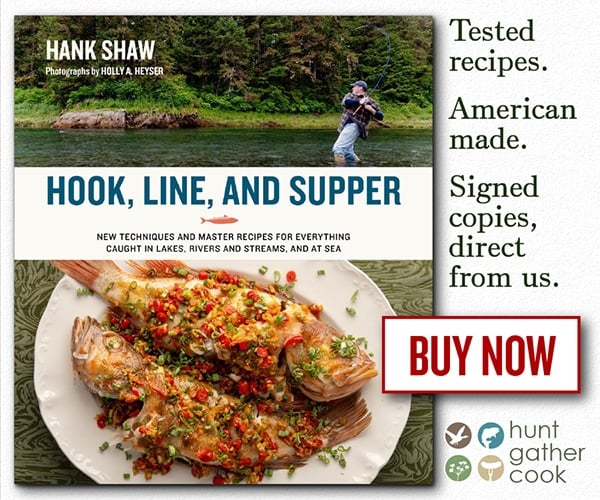

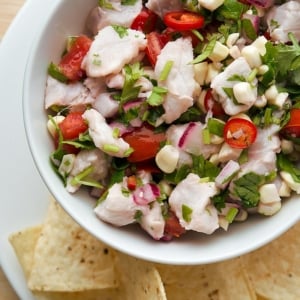
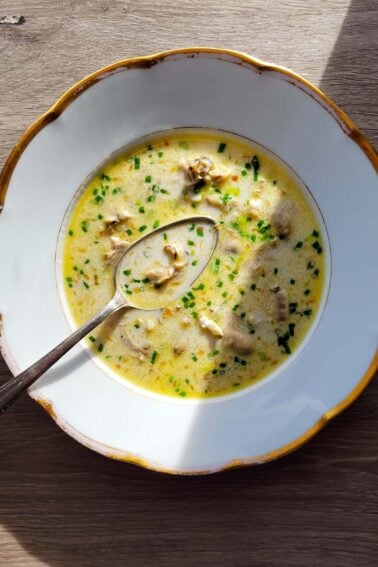

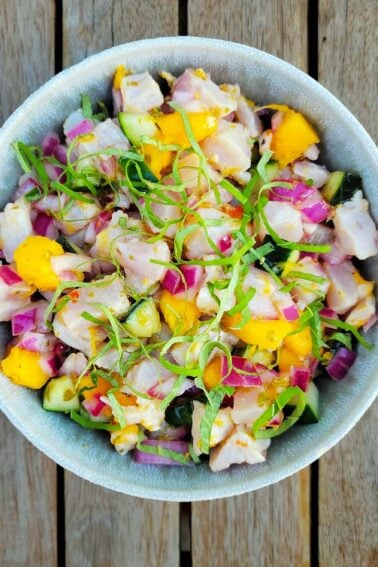
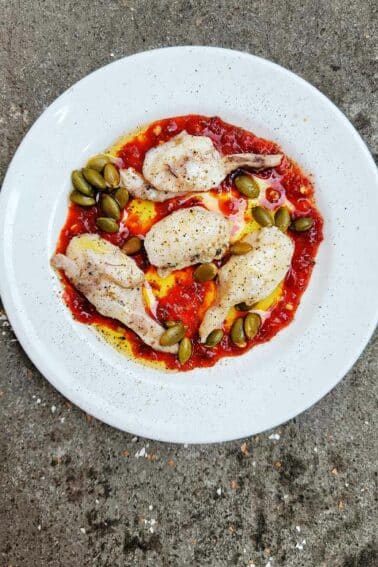
This may be a stupid question but do you thaw the fish out before marinating it in the citrus juice?
Nicole: Yes.
I am interested in cubing into small pieces and using that what are your thoughts?
Mark: You should be fine. I often cut the fish into small pieces.
You seem to know a lot about this. I make my own lox from time to time. Is this dangerous?
Leslie: There is a slight risk in curing unfrozen salmon, but it is very slight. I do it all the time.
Great tips Hank. What about sole, is it better to freeze too?
BlueSky: Yes, better to flash freeze. Bottom dwellers, and all that…
Thank you for this information. For freezing the fish do you mean your standard home freezer or flash freezing or deep freezing? I don’t understand the difference. I live in SE Alaska and we are lucky to have halibut frequently. I’d love to try making halibut ceviche and salmon poke but I am so nervous. I made lox with fresh sockeye salmon a few years ago and got sick just as you described in your article. That fish was fresh, never frozen. I won’t do that again! Thanks for your advice!
Erin: Any freezer will do the trick.
Hank –
I got here (belatedly) from the link on your Squid Ceveche post.
Could you trade off lower temperatures for less exposure time? I was wondering how long you would have to freeze your fish for if you packed it in dry ice instead of just in a conventional freezer. (I’ve got some friends who do liquid nitrogen ice cream – there’s cold for you! Not that it would be a practical way to freeze food that cold for long periods.)
– JDBell
Have you ever made ceviche w/ Leapord sharks? What is the best way to prepare Leapords? Thanks Hank, enjoyed you on JRE.
Chris: yes, I have. I do pre-freeze the meat, though. Leopards are good any way you cook them – one of my favorite fish!
why not just parboil the fish? OK, it isn’t the tradition. So what?
Richard: Exactly. Not tradition, but it won’t hurt anything. Just don’t cook too long, or the fish will be mushy.
Im still not clear on the shellfish, scallops in particular. I suppose i should not only ask about parasites in scallops ceviche but raw scallops in general. Disease free?
Rich: AS far as I know, scallops are safe to eat raw when they are harvested from clean water.
Once again, Hank, thank you for sharing your experience.
I love me some sashimi and ceviche but I’ll never get a chance to apprentice under an Itamae. So, its hard for me to learn what species lend themselves to what methods of preparations. Got any books you can suggest?
BTW: The Inuit people up north were known by their neighbors as the Raw Meat Eaters. I think its safe to say most of that raw meat was fish.
Hi Hank,
We catch our fish on the northeast with species such as: porgy, striped bass, fluke, black seabass, bluefish, and sea robin. All of which we have eaten either as ceviche or crudo without freezing. Should we be concerned? I have only found worms once on a fluke which we had cooked. Kinda freaked out now, but also feel like we’ve survived so far? What do you think?
Best,
Robin
Robin: I’d freeze these species, with the exception of bluefish, which is terrible frozen. If you want to get into it, research parasites of those specific fishes and you can be sure. I am betting a few might be relatively parasite free.
I read the basic recipes online, and let the fish sit in the lime juice while I cut up all the onion, cucumber, and tomatoes.
Then I added it all together and covered and put in fridge overnight. My boyfriend said he won’t eat it, due to the fact of bacteria and adding all at once. Can you please tell me if I just did all that for nothing and shouldn’t eat it now?
Melanie: You are fine. I do this all the time.
Another traditional Peruvian component is to have sliced sweet potatoes (the white ones not orange) on the bottom of the dish. My sister-in-law is Peruvian and she insists this is a must. It is actually great because it cuts the heat a little and adds just a tad of sweetness to the dish!
I’ve been told by two senior marine biologists that there are no parasitic marine worms that can survive in humans. Also, even if the worms were alive when you ate them, there’s system little chance they’d survive the human gastric system.
Emeril Lagasse has an outstanding recipe for ceviche. I’ve enjoyed it with pompano, speckled trout, redfish, and shrimp.
https://www.foodnetwork.com/recipes/emeril-lagasse/ceviche-recipe2.html
Don: That is sort of correct. The most common, the anasakis, won’t come to term inside you, but it will most definitely make you sick.
I’ve been making ceviche for yrs. I use a mix of scallops, shrimp, cod, and surimi ( I prefer this over crab). Tomatoes, jalapeno, serrano, onion, fresh limes, cilantro. Spicy and flavorful. Serve on crispy tortilla with some sour cream and hot sauce.
The original Peruvian recipe would also include a piece of sweet potato.
Eva: Really? Cool. How would it be cooked?
How about Kokanee ceviche? I’ve always made ceviche from Kokanee out of Donner, Stampede, or Independence. Always fresh, never a problem, and always delicious. But now you have me concerned. Is Kokanee OK if you pre-freeze it?
Kej: I would absolutely pre-freeze it. Tapeworms are a real possibility with those fish. Rare enough to get away with it once in a while, but why play Russian Roulette?
Just an FYI my husband always gives me fresh out water redfish best ceviche ever, no freezing no anything… BEST thing ever just lemon/lime/onions/cilantro/salt pepper/a bit of jalapeño pepper, onions and garlic chives…WOW!!!
i wish i would have read this sooner, so informative. i just bought some previously frozen cod at whole foods. the package just says cod, not codfish or lingcod or anything of that nature. i thawed it in cold water and now it’s bathing in citrus in the refrigerator. i read above that i should be weary of using cod for being wormy, being that it was frozen when purchased, should i be concerned? thanks in advance.
YD: If it is true cod, you will see the little worms. But they will be dead, so you’re fine from a food safety perspective.
If you like a little grapefruit I HIGHLY recommend YUZU. It has a mild flavor . Wonderful.